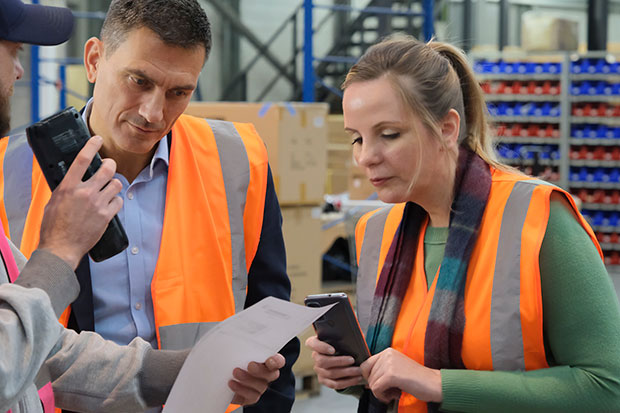Everybody is talking about Artificial Intelligence but what are its potential applications for warehousing and supply chain? Edward Napier-Fenning, Sales & Marketing Director of leading supply chain software company Balloon, explores five key areas that can boost performance.
 1. Enhanced route planning
1. Enhanced route planning
Up to now a driver has set off with a fixed route, perhaps a regular round, or one planned a day or two earlier, and it is up to him/her to work out the best response to an accident, traffic jam or other event as and when these arise. Now, traffic management can be linked in real time to resources such as Google, working out not just the work-around a current problem, but using its learning to predict where the congestion is likely to occur, which strangely often isn’t at the site of the actual incident. This makes a more robust avoidance recommendation and helps keep deliveries to and from the warehouse on schedule.
2. Efficient picking.
A lot of the noise around AI in the supply chain is around issues like inventory and ordering. Improvement here is clearly important, but we have barely begun to touch on how to run the warehouse more efficiently, which is where some really big labour and administration costs lie – as well as potential savings.
AI will be able to improve the choice and operation of picking strategies – and the optimum may differ according to the type of goods, or even the time of day. Strategies are many and varied: for example batch picking, which involves walking a route, picking one SKU at a time for a batch of orders. Or it could be zonal or ‘cluster’ picking where the operator picks all the SKUs in one ‘zone’ for a batch of orders, and the tote (with or without that operative) then moves on to the next zone.
3. More effective labour management.
In current conditions the greatest challenge for increasing efficiency is that of where to allocate scarce and expensive labour. A facility with good Warehouse Management Software (WMS) and other systems should have a great deal of data from end to end: what is happening in receiving, put away, picking, replenishment and so on. That should tell the operator where they need to put their people, but it is complex. A traditional WMS manages this, up to a point, but relies heavily on people creating, inputting and maintaining data, from standard times for elements of work, to who is allowed to perform certain tasks, and so on. AI could certainly make a further contribution in pulling data from the various different sources and making sense of it.
4. More accurate reporting and analytics.
Balloon is actively involved in applying AI in the supply chain space. Activity in the sector is growing fast. It has to be remembered that everyone’s environment is different, especially among SMEs, which is one of the reasons why AI’s ability to learn from the situation, rather than merely process an externally derived algorithm, is so attractive. Another consideration is that a lot of the data is text-based, so one of the things we are doing is to pull data from multiple sources into a Microsoft analytics package with a data model that tells the system how to relate data to different objects. We can create a dashboard and on top of that we can layer some ChatGPT type functionality – ‘show me a pie chart of my staff picking by day and by person’ – so managers don’t have to ask IT to build them a report.
5. Enhanced image recognition.
AI is already making a difference here, for example in data entry, including Optical Character Recognition and image scanning – making sense of it, relating it to other elements in the system, and particularly in looking for errors and discrepancies. That might be a quantity difference between a sales order and the relevant pick note; or it might be a delivery address that doesn’t exist or doesn’t make sense: in which case it may be possible to configure AI to make intelligent suggestions about what the address should be, before the delivery driver sets off on a wild goose chase.
So there is a lot going on with AI in the warehouse environment. At present the landscape is a patchwork of small developments helping people to fit bits of AI to their operations, often to start with just eliminating smaller pieces of work at the interfaces between systems, which is where, for instance, data discrepancies tend to manifest. But this patchwork will surely coalesce in fairly short order.
That chimes with Balloon’s own approach whereby our innovation team is targeting small pockets of advanced functionality, clustering being one of the first, and one where we have already seen big efficiency gains on customer sites.





Comments are closed.